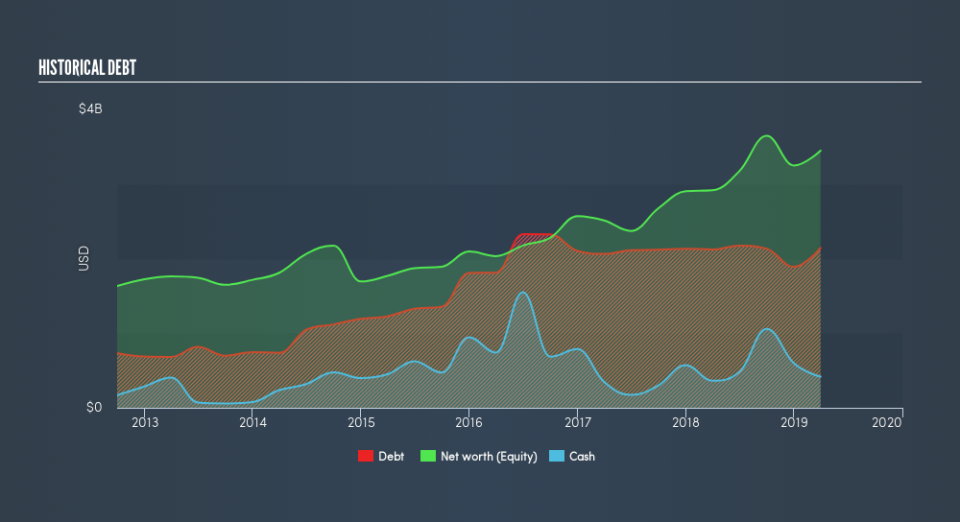What Does PBF Energy Inc.'s (NYSE:PBF) Balance Sheet Tell Us About It?

Want to participate in a short research study? Help shape the future of investing tools and you could win a $250 gift card!
Investors are always looking for growth in small-cap stocks like PBF Energy Inc. (NYSE:PBF), with a market cap of US$3.6b. However, an important fact which most ignore is: how financially healthy is the business? Evaluating financial health as part of your investment thesis is essential, as mismanagement of capital can lead to bankruptcies, which occur at a higher rate for small-caps. We'll look at some basic checks that can form a snapshot the company’s financial strength. Nevertheless, these checks don't give you a full picture, so I suggest you dig deeper yourself into PBF here.
PBF’s Debt (And Cash Flows)
Over the past year, PBF has ramped up its debt from US$2.2b to US$2.4b – this includes long-term debt. With this growth in debt, PBF's cash and short-term investments stands at US$418m , ready to be used for running the business. Additionally, PBF has generated cash from operations of US$773m over the same time period, leading to an operating cash to total debt ratio of 32%, indicating that PBF’s current level of operating cash is high enough to cover debt.
Can PBF pay its short-term liabilities?
At the current liabilities level of US$2.6b, it appears that the company has been able to meet these commitments with a current assets level of US$4.0b, leading to a 1.53x current account ratio. The current ratio is calculated by dividing current assets by current liabilities. Usually, for Oil and Gas companies, this is a suitable ratio since there's a sufficient cash cushion without leaving too much capital idle or in low-earning investments.
Can PBF service its debt comfortably?
With a debt-to-equity ratio of 64%, PBF can be considered as an above-average leveraged company. This is a bit unusual for a small-cap stock, since they generally have a harder time borrowing than large more established companies. We can test if PBF’s debt levels are sustainable by measuring interest payments against earnings of a company. Ideally, earnings before interest and tax (EBIT) should cover net interest by at least three times. For PBF, the ratio of 3.44x suggests that interest is appropriately covered, which means that lenders may be inclined to lend more money to the company, as it is seen as safe in terms of payback.
Next Steps:
PBF’s high cash coverage means that, although its debt levels are high, the company is able to utilise its borrowings efficiently in order to generate cash flow. Since there is also no concerns around PBF's liquidity needs, this may be its optimal capital structure for the time being. I admit this is a fairly basic analysis for PBF's financial health. Other important fundamentals need to be considered alongside. I suggest you continue to research PBF Energy to get a better picture of the small-cap by looking at:
Future Outlook: What are well-informed industry analysts predicting for PBF’s future growth? Take a look at our free research report of analyst consensus for PBF’s outlook.
Valuation: What is PBF worth today? Is the stock undervalued, even when its growth outlook is factored into its intrinsic value? The intrinsic value infographic in our free research report helps visualize whether PBF is currently mispriced by the market.
Other High-Performing Stocks: Are there other stocks that provide better prospects with proven track records? Explore our free list of these great stocks here.
We aim to bring you long-term focused research analysis driven by fundamental data. Note that our analysis may not factor in the latest price-sensitive company announcements or qualitative material.
If you spot an error that warrants correction, please contact the editor at editorial-team@simplywallst.com. This article by Simply Wall St is general in nature. It does not constitute a recommendation to buy or sell any stock, and does not take account of your objectives, or your financial situation. Simply Wall St has no position in the stocks mentioned. Thank you for reading.

